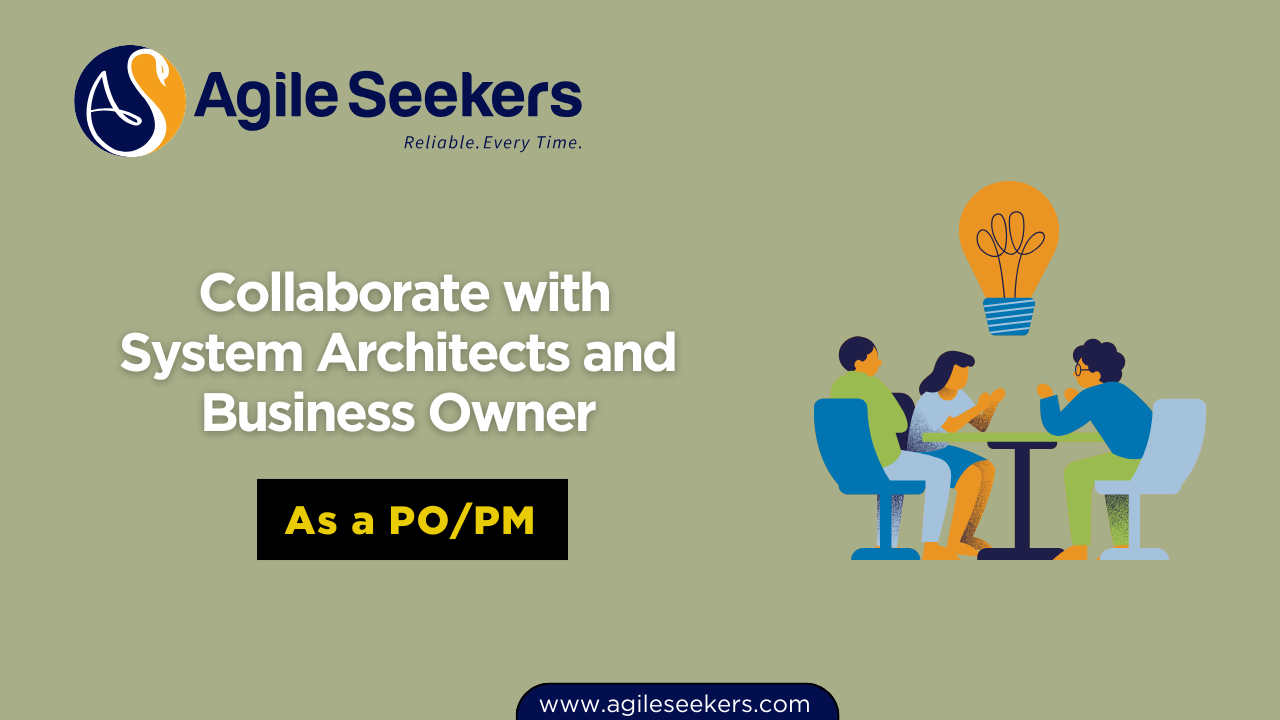How SAFe POPMs Collaborate with System Architects and Business Owner

In a SAFe (Scaled Agile Framework) environment, collaboration isn’t just encouraged—it’s critical. Among the most important partnerships are those between SAFe Product Owners/Product Managers (POPMs), System Architects, and Business Owners. These roles don’t work in silos; they continuously interact to steer strategy, ensure technical feasibility, and deliver value to the enterprise.
This article explores how SAFe POPM Certification equips professionals to navigate these relationships, align business priorities, and co-create impactful solutions.
The SAFe Framework: Shared Responsibility, Shared Success
In SAFe, alignment is everything. Product Owners/Product Managers focus on delivering customer value. System Architects are responsible for the architectural runway and long-term technical health. Business Owners define strategic priorities and ensure the work aligns with enterprise goals.
When these three come together effectively, teams don’t just build features—they build sustainable, scalable systems that drive transformation.
Understanding the Roles
- SAFe POPMs: Represent customer needs, prioritize backlogs, and ensure value delivery through Program Increments (PIs).
- System Architects: Define the technical direction, enable architecture runway, and ensure solutions are robust and scalable.
- Business Owners: Provide funding, set strategic vision, and are accountable for business outcomes.
Key Collaboration Points
1. Participating in PI Planning
PI Planning is where strategic alignment happens. Here, POPMs, System Architects, and Business Owners align around the mission. POPMs present the prioritized features and expected outcomes, System Architects ensure architectural feasibility, and Business Owners validate alignment with business goals.
2. Balancing Business Value and Technical Health
POPMs often advocate for features that deliver immediate value. System Architects, on the other hand, champion technical enablers and architectural investments. Effective collaboration ensures that neither is compromised. Together, they create a roadmap that delivers value without incurring technical debt.
3. Defining the Program Backlog
The program backlog is a critical touchpoint. POPMs define features based on customer insights. System Architects contribute enablers to maintain system integrity. Business Owners bring strategic clarity. Jointly managing the backlog ensures that it reflects a balance of business, technical, and customer priorities.
4. Participating in Inspect & Adapt Workshops
These sessions are crucial for evaluating outcomes and identifying improvement opportunities. POPMs measure value delivered. System Architects assess architectural fitness. Business Owners review return on investment. Collaborative inspection leads to actionable insights.
5. Feature-Capability-Epic Alignment
POPMs break down epics into features and capabilities. Architects provide the technical perspective to support this breakdown. Business Owners ensure alignment with strategic themes. This triad ensures that every initiative—large or small—has a shared understanding and mutual ownership.
Collaboration in Action: A Sample Scenario
Scenario: A financial services company wants to implement real-time fraud detection.
| Role | Contribution |
|---|---|
| POPM | Defines customer need, drafts the feature, sets acceptance criteria. |
| System Architect | Designs scalable architecture, identifies necessary enablers, ensures security compliance. |
| Business Owner | Prioritizes investment, validates alignment with business objectives, approves budget. |
Building a Culture of Trust and Transparency
Effective collaboration depends on more than process—it requires culture. POPMs, System Architects, and Business Owners must operate with transparency, share knowledge freely, and trust one another’s expertise. This culture empowers faster decision-making and builds organizational agility.
SAFe Training Enables Better Collaboration
Professionals trained through SAFe POPM Training gain tools to communicate clearly across technical and business boundaries. They understand architectural trade-offs, how to engage stakeholders, and how to prioritize for impact—not just effort.
The SAFE Product Owner Certification helps bridge gaps by fostering a shared language between business strategy and technical delivery.
Tips for Strengthening Collaboration
- Establish regular syncs: Don’t wait for formal meetings. Weekly check-ins help surface issues early.
- Share metrics transparently: Include business KPIs, technical health indicators, and customer outcomes.
- Use visual tools: Leverage Kanban boards, capability maps, and architectural diagrams for clarity.
- Encourage constructive tension: Diverse perspectives yield better solutions—when handled respectfully.
Real-World Example: POPM and System Architect Alignment
In a SAFe implementation at a global telecom company, POPMs were initially frustrated by delays from the architecture team. After joint workshops facilitated by Release Train Engineers (RTEs), both teams agreed to co-develop backlog items. The result? Faster cycle times, better architectural integrity, and improved business satisfaction.
This reinforces why SAFe Product owner/Manager certification is so valuable—it teaches frameworks for cooperation, not just isolated execution.
Conclusion: The Power of Strategic Collaboration
SAFe POPMs, System Architects, and Business Owners aren’t just collaborators—they are co-creators of business value. When their efforts are aligned, organizations can innovate with confidence, scale with stability, and deliver lasting impact to customers.
Want to become the kind of POPM who can bridge business and technology with ease? Explore SAFe POPM Certification and begin your transformation journey.
For additional insights on the role of business owners in agile, check out the SAFe Business Owners page on the official Scaled Agile site.




















